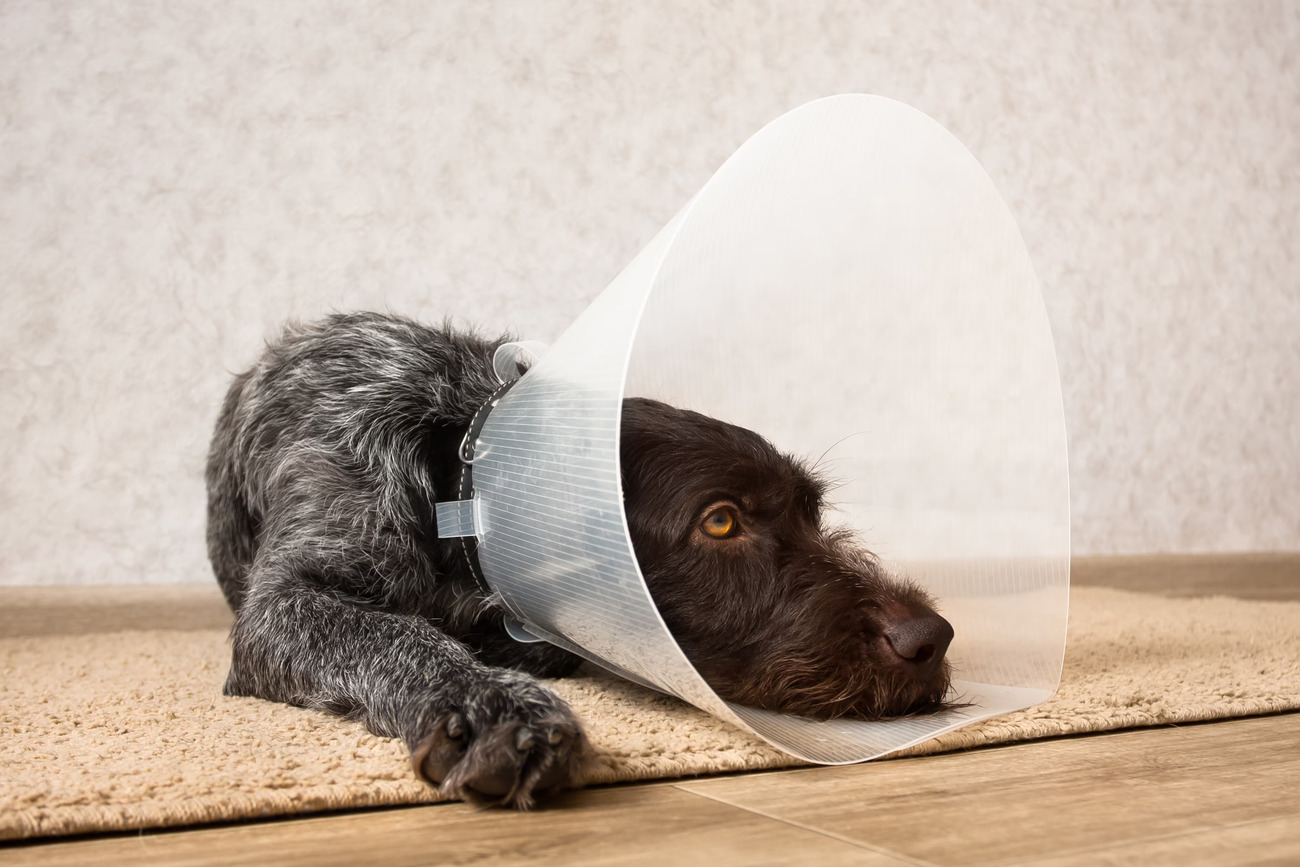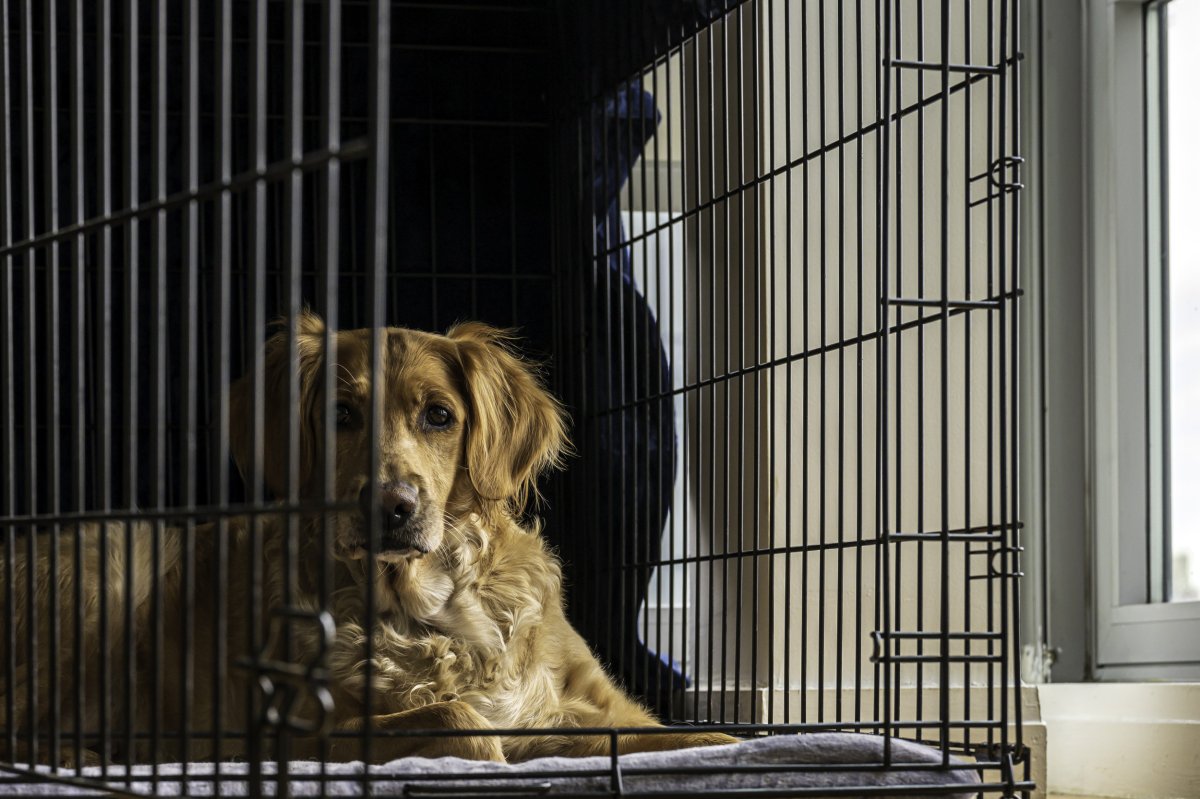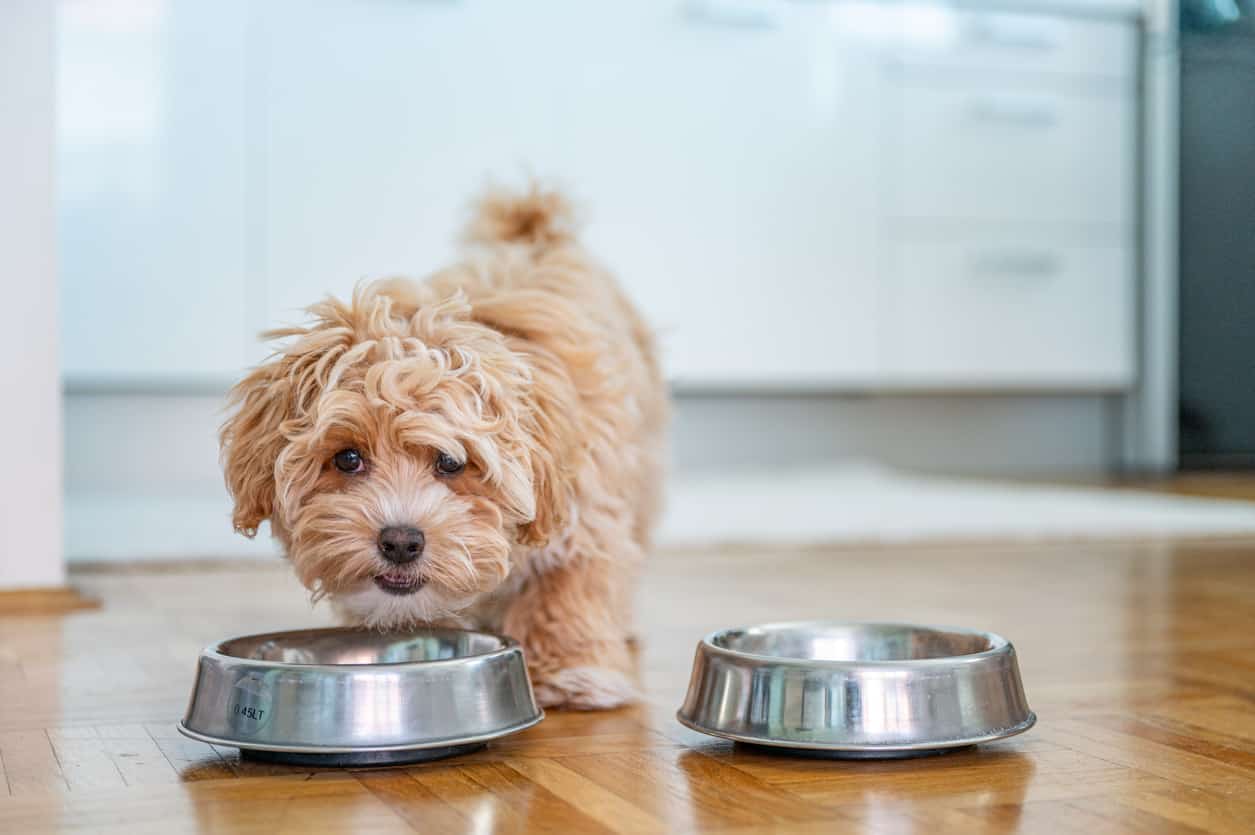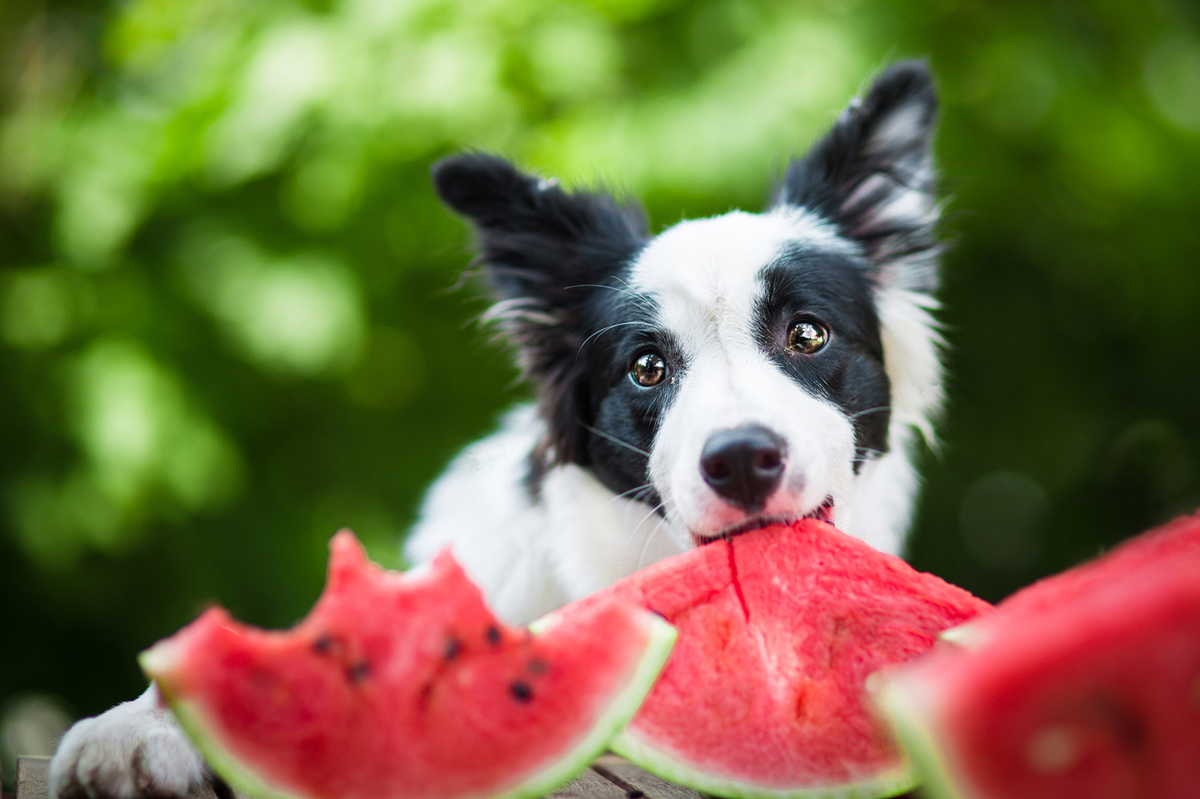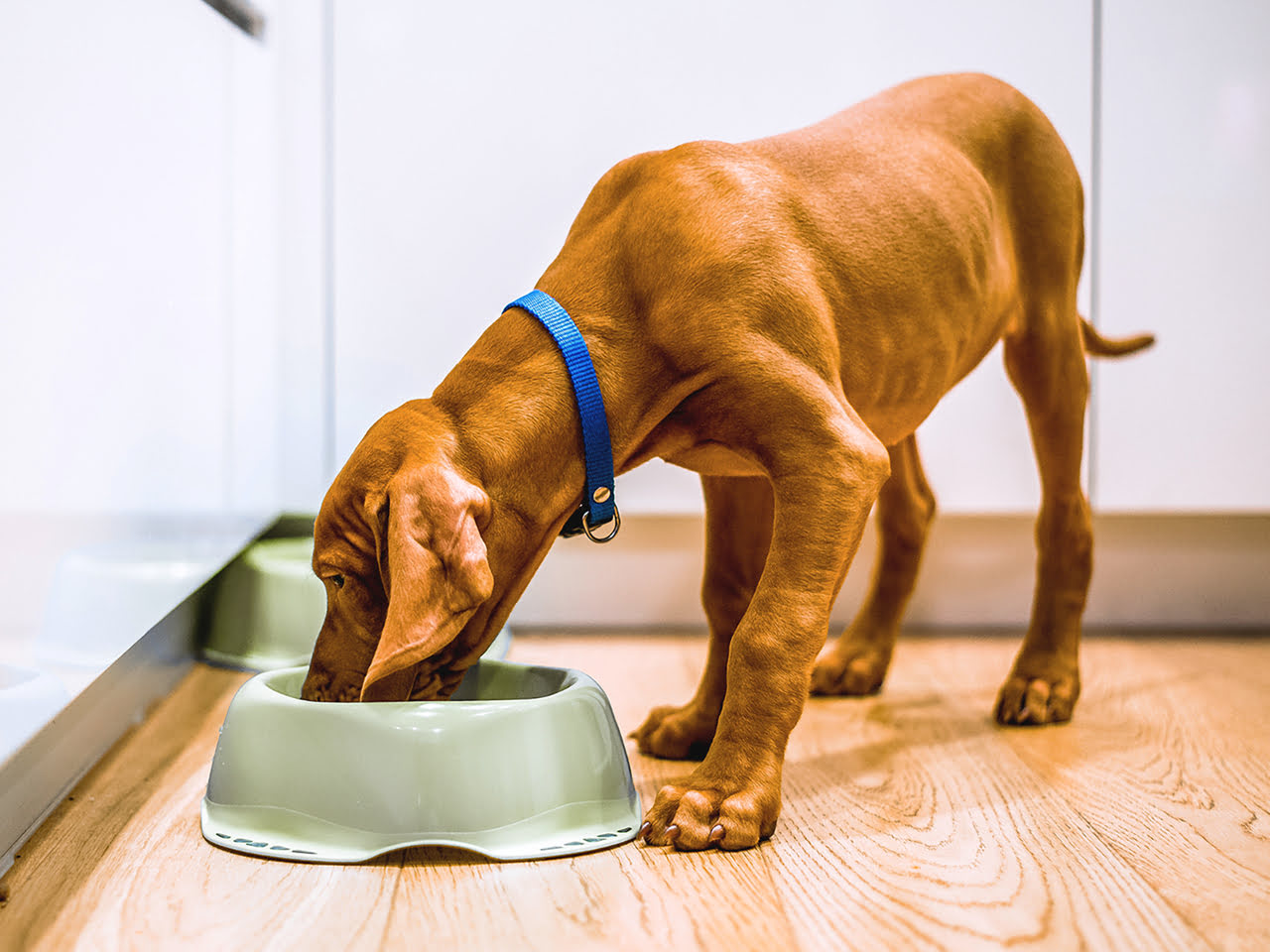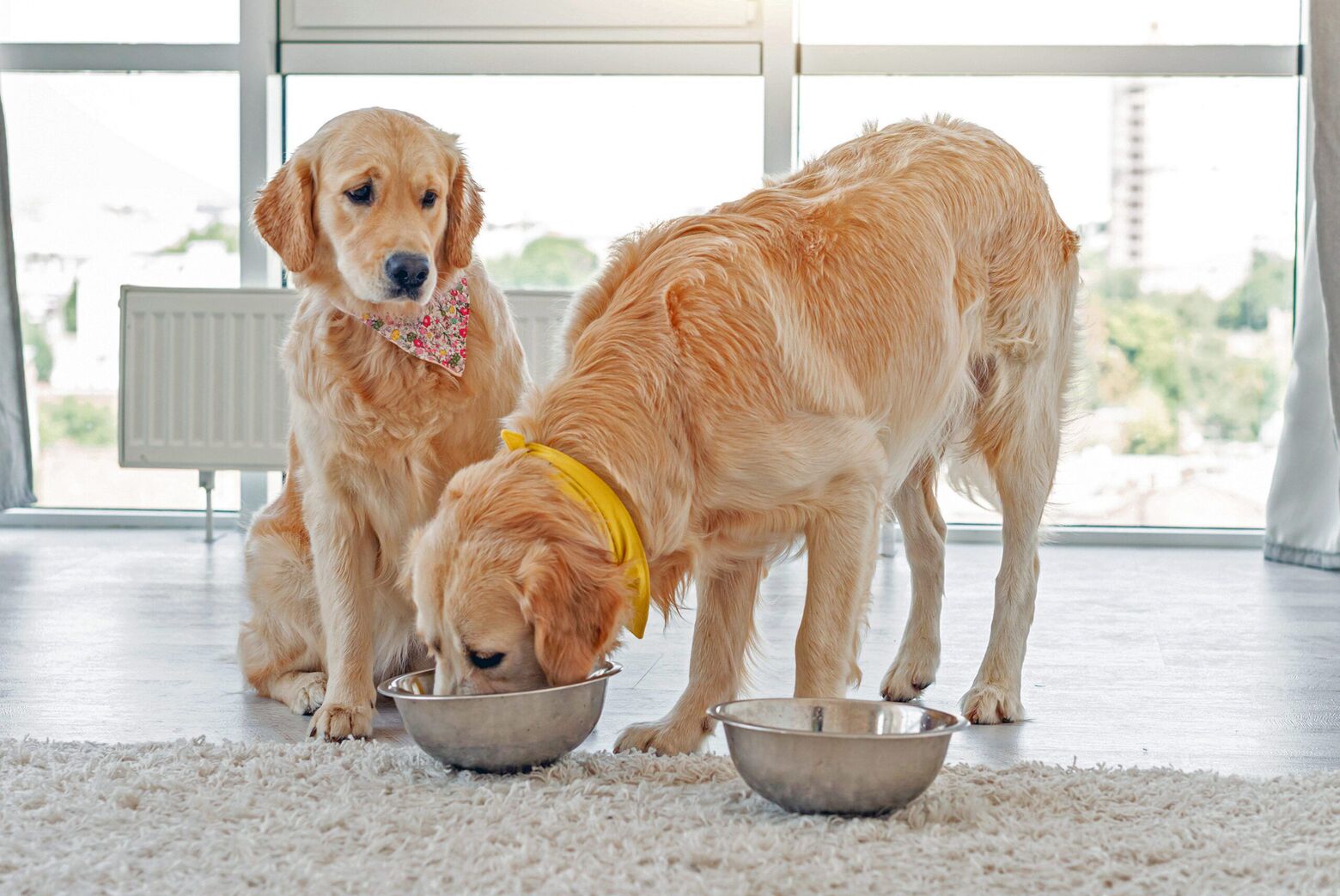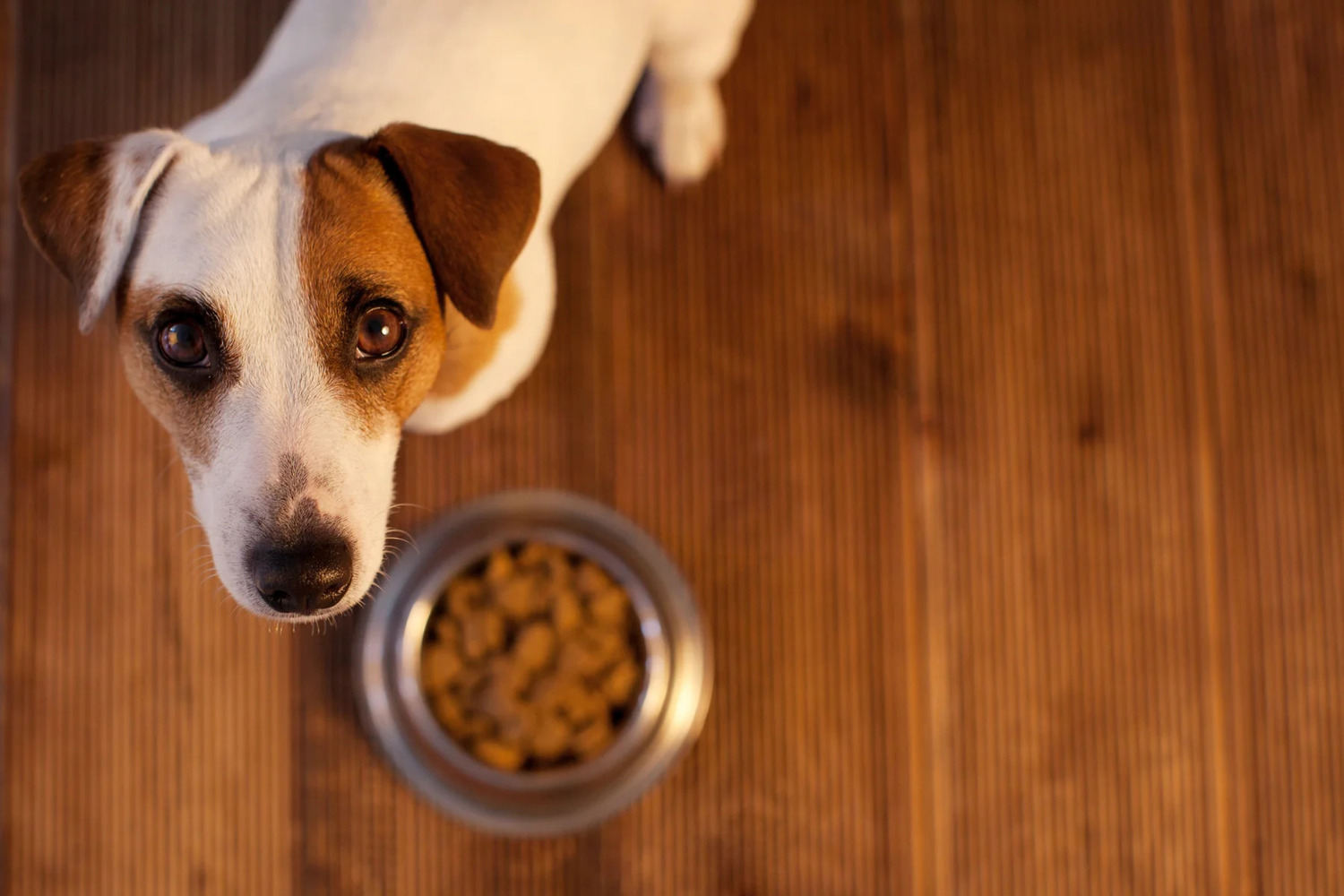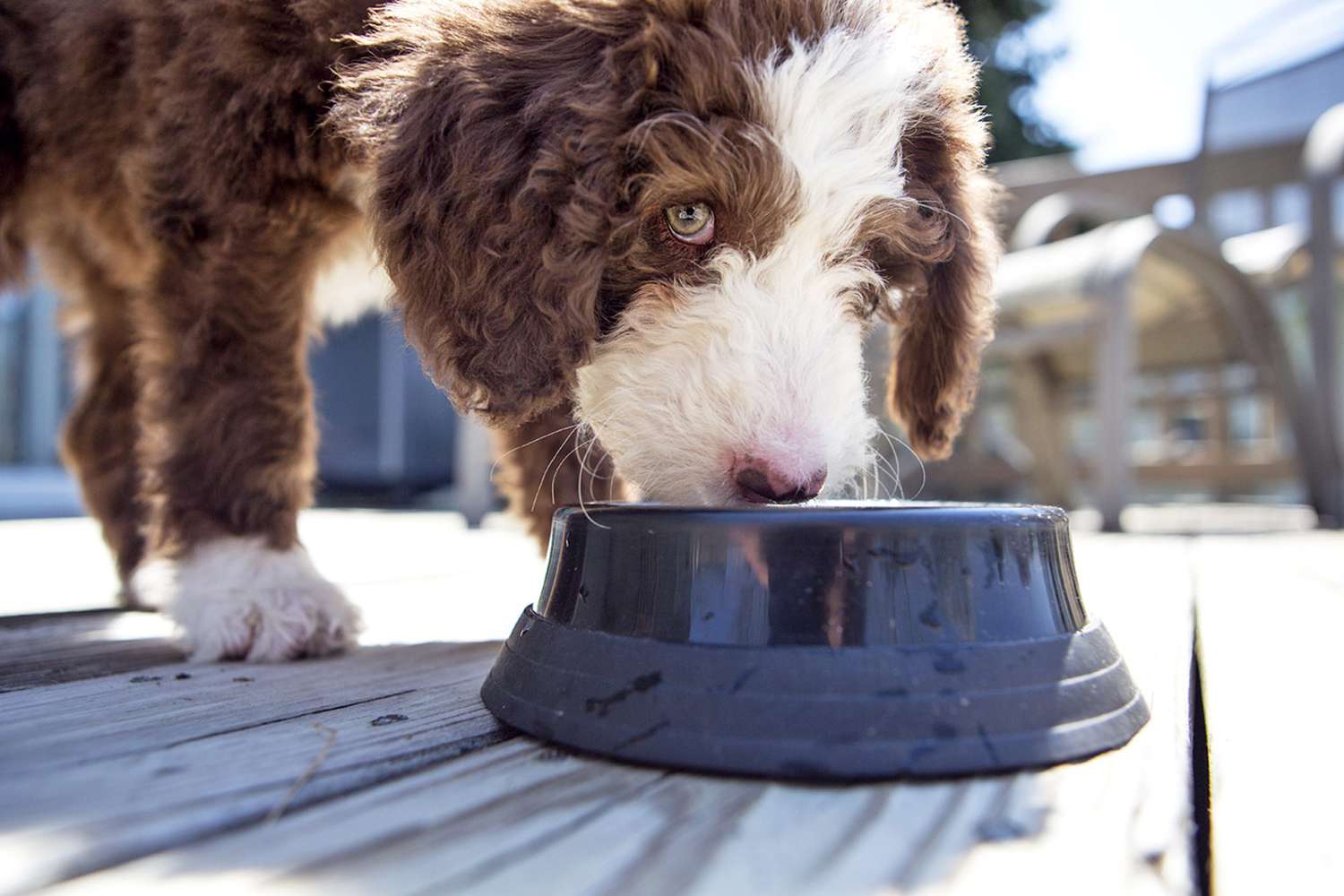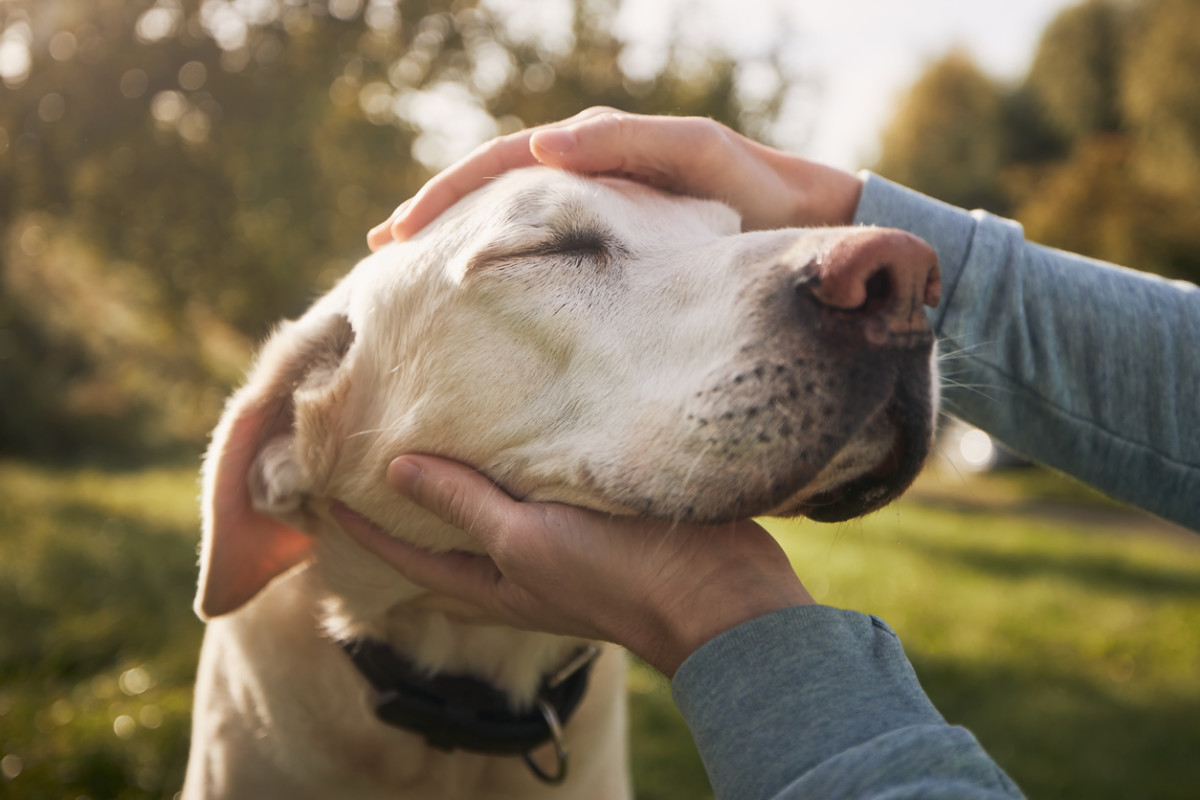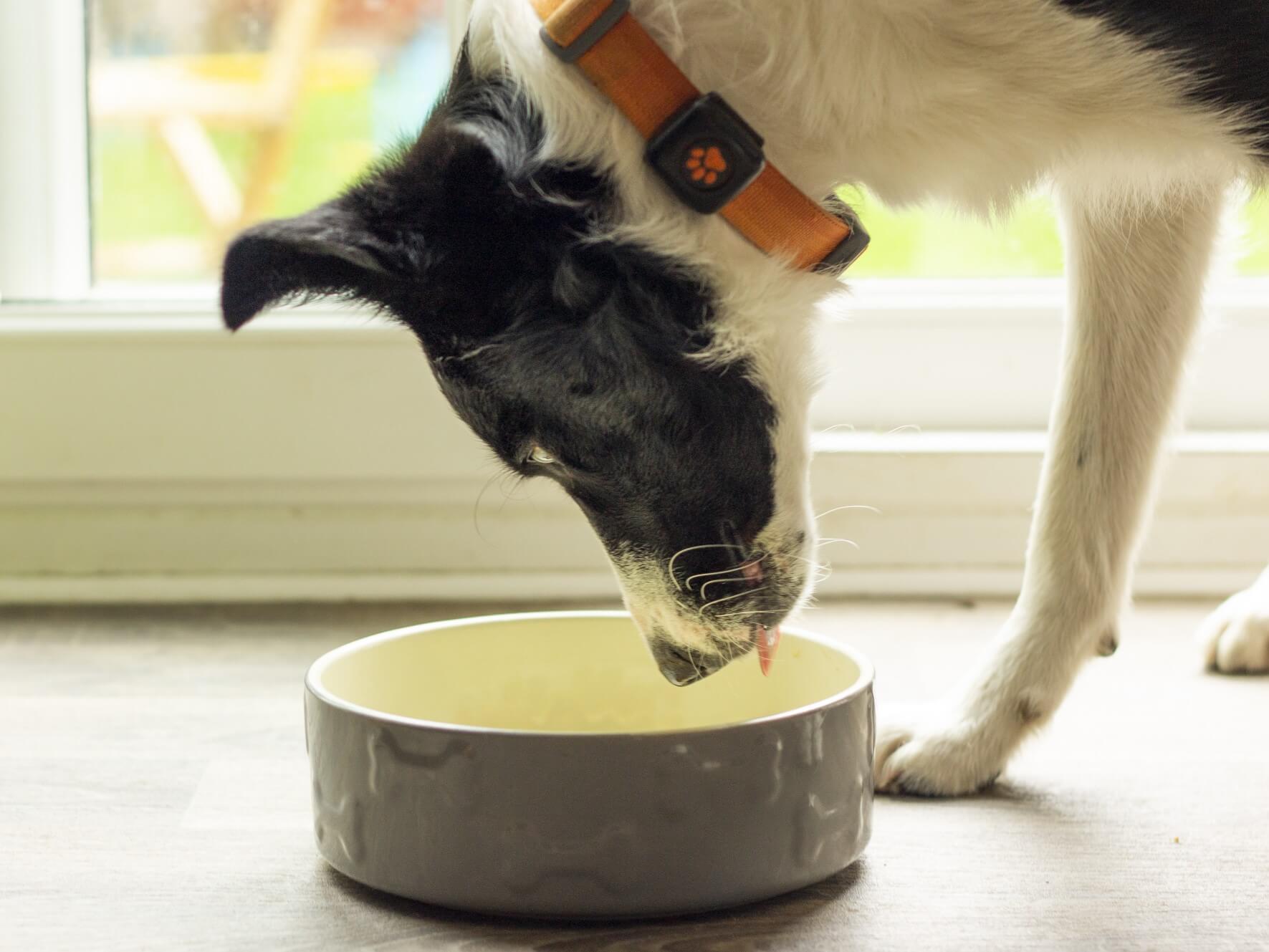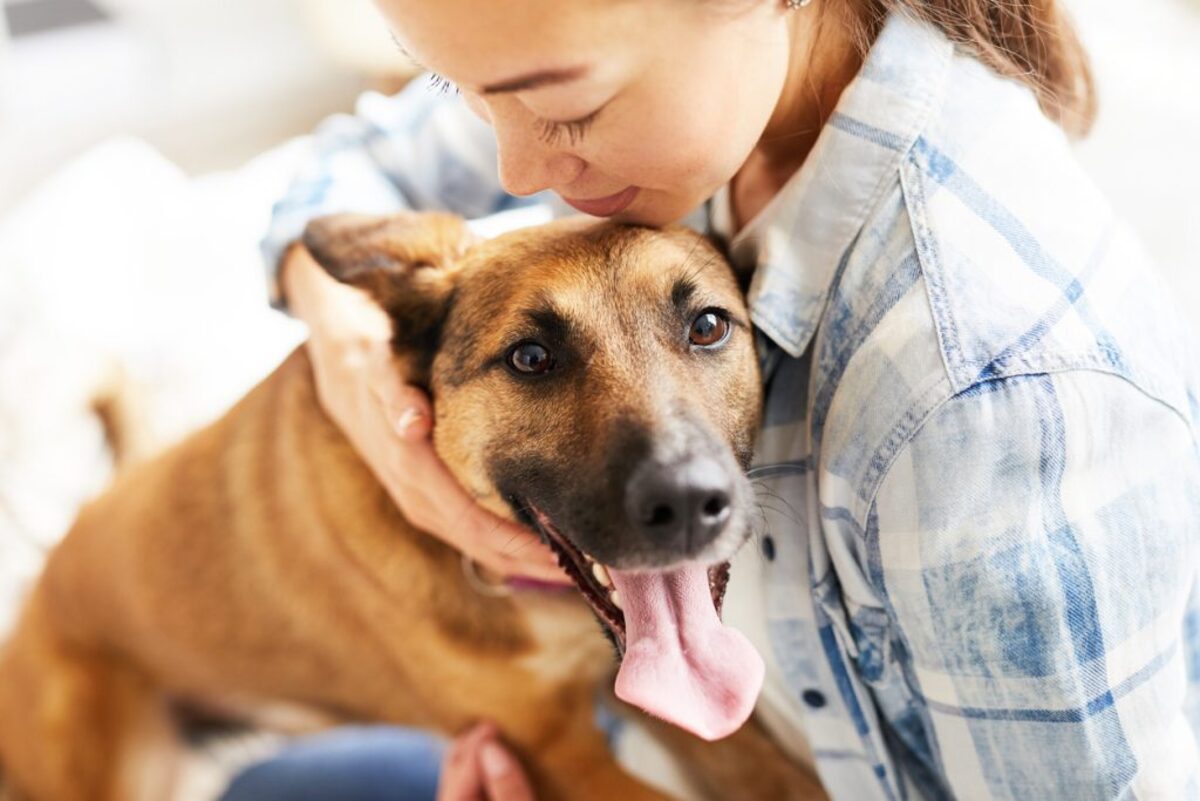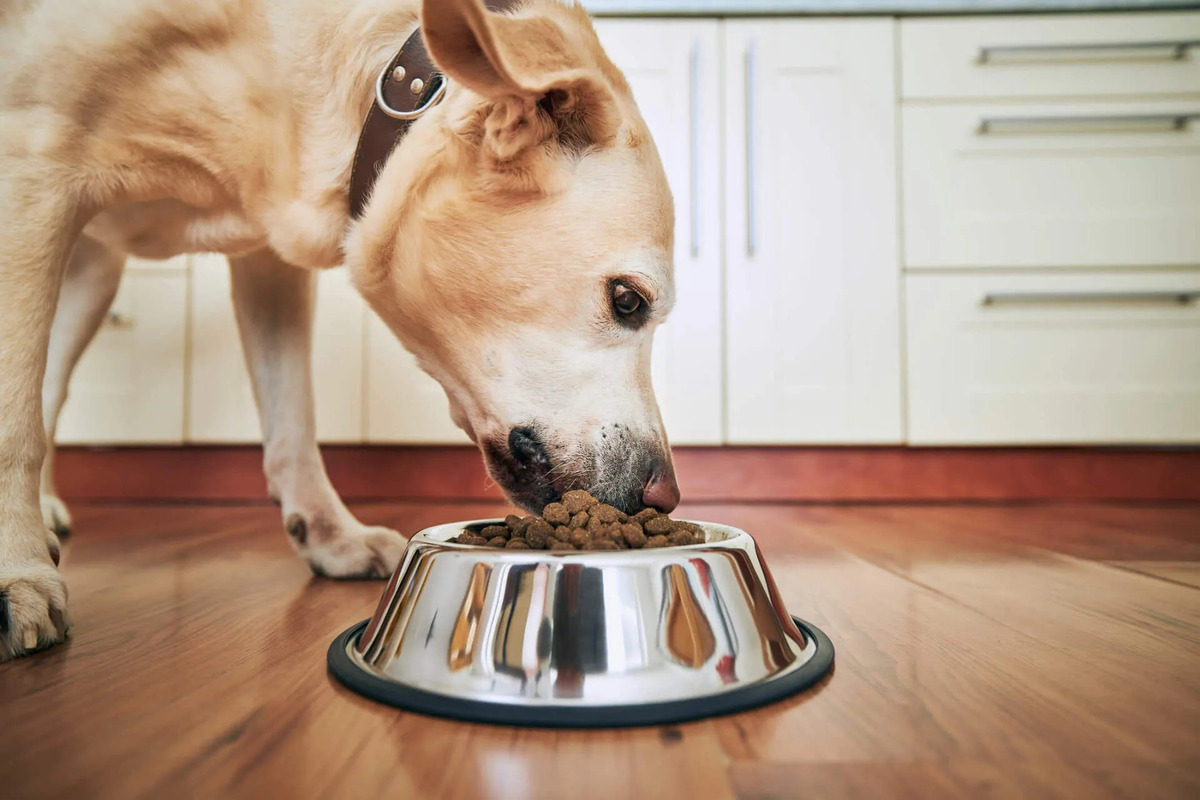Home>Health & Wellness>Nutrition & Diet>How Long Should A Dog Be On A Bland Diet
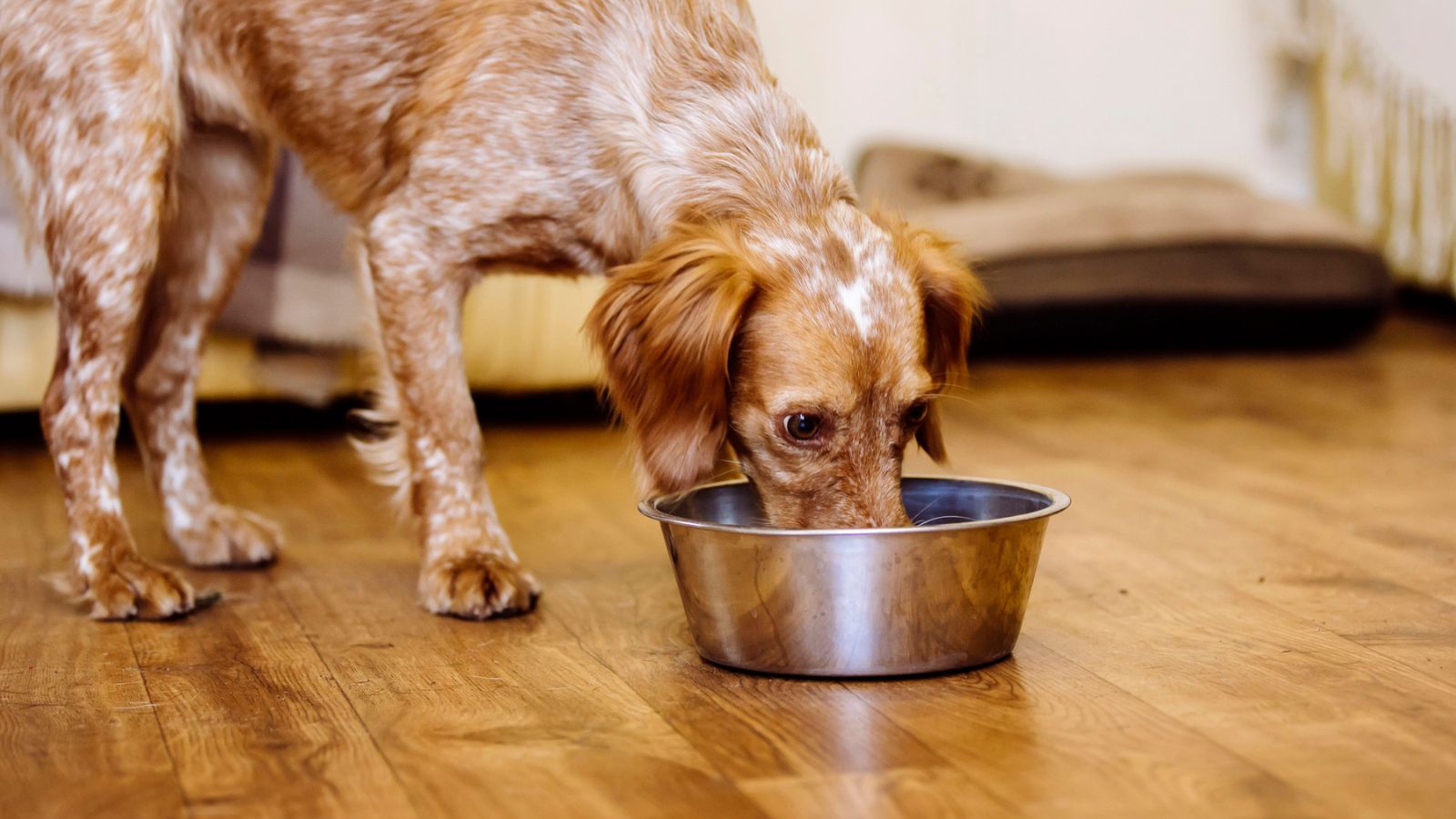

Nutrition & Diet
How Long Should A Dog Be On A Bland Diet
Published: January 27, 2024
Learn how long a dog should be on a bland diet for optimal nutrition and diet management. Find expert advice and tips for your pet's health.
(Many of the links in this article redirect to a specific reviewed product. Your purchase of these products through affiliate links helps to generate commission for Pawsomeoldies.com, at no extra cost. Learn more)
Table of Contents
Introduction
Introducing a bland diet to a dog can be a crucial step in aiding their digestive health and overall well-being. Whether your furry companion is experiencing gastrointestinal upset or transitioning from illness, a bland diet can provide the necessary relief and support for their delicate digestive system. Understanding the purpose and duration of a bland diet is essential for pet owners to ensure their dog's swift recovery.
A bland diet for dogs is a temporary feeding regimen that consists of easily digestible and gentle foods. This diet is specifically formulated to soothe the digestive tract and minimize irritation, making it an ideal choice for dogs experiencing vomiting, diarrhea, or other gastrointestinal issues. By offering easily digestible foods, a bland diet provides the necessary nutrients while giving the digestive system a chance to rest and recuperate.
When determining the appropriate duration for a bland diet, it's important to consider the underlying reason for its implementation. Whether your dog is recovering from a bout of stomach upset, undergoing a dietary transition, or recuperating from a specific health condition, the duration of the bland diet may vary. Understanding the specific needs of your dog and consulting with a veterinarian can provide valuable insights into the optimal duration for implementing a bland diet.
As a responsible pet owner, being well-informed about the purpose and potential duration of a bland diet empowers you to make informed decisions regarding your dog's dietary needs. Additionally, recognizing the signs that indicate the necessity of a bland diet and understanding the transition back to a regular diet are essential aspects of ensuring your dog's health and well-being.
By delving into the intricacies of a bland diet for dogs and its appropriate duration, pet owners can navigate their furry companion's health challenges with confidence and compassion. Let's explore the nuances of a bland diet for dogs, shedding light on its significance and the considerations for determining the optimal duration to support canine digestive health and recovery.
Read more: How Long Should A Dog Be On A Rice Diet
What is a Bland Diet for Dogs?
A bland diet for dogs is a specialized feeding regimen designed to provide gentle and easily digestible foods to support canine digestive health. This temporary diet primarily consists of mild, low-fat, and easily digestible ingredients, aiming to alleviate gastrointestinal distress and promote recovery. The key components of a bland diet typically include boiled lean meats such as chicken or turkey, white rice, and occasionally, low-fat cottage cheese or plain yogurt. These ingredients are selected for their mild nature, which minimizes the strain on the digestive system while ensuring essential nutrients are still provided.
The primary objective of a bland diet is to offer a break to the digestive system, especially during episodes of vomiting, diarrhea, or other gastrointestinal disturbances. By incorporating easily digestible foods, the diet helps in reducing the workload on the digestive tract, allowing it to heal and regain its normal function. Additionally, the bland diet assists in firming up stools, regulating bowel movements, and minimizing the risk of further irritation to the gastrointestinal lining.
The simplicity and mildness of the bland diet make it an ideal choice for dogs recovering from stomach upset, undergoing dietary transitions, or experiencing temporary digestive disturbances. It serves as a gentle yet effective means of providing essential nutrients while minimizing the risk of exacerbating existing gastrointestinal issues.
Furthermore, the bland diet for dogs is not intended for long-term use, as it may lack certain essential nutrients required for sustained health. Instead, it is a short-term strategy aimed at providing relief and support during periods of digestive upset. While the specific ingredients and proportions may vary, the overarching goal remains consistent: to offer easily digestible, low-fiber, and low-fat foods that are gentle on the stomach and intestines.
Understanding the purpose and composition of a bland diet for dogs is crucial for pet owners, as it equips them with the knowledge to provide appropriate care for their canine companions during times of digestive distress. By recognizing the significance of a bland diet and its role in supporting digestive health, pet owners can effectively address their dog's dietary needs and contribute to their overall well-being.
When Should a Dog Be Put on a Bland Diet?
A dog should be put on a bland diet when they experience gastrointestinal upset, such as vomiting, diarrhea, or excessive gas. These symptoms can be indicative of various underlying causes, including dietary indiscretion, food allergies, infections, or sudden dietary changes. Additionally, stress, anxiety, or consuming non-food items can also lead to digestive disturbances in dogs. When such issues arise, transitioning the dog to a bland diet can provide relief and support for their sensitive digestive system.
Furthermore, if a dog has been diagnosed with a specific gastrointestinal condition, such as gastritis or colitis, implementing a bland diet may be recommended as part of the treatment plan. These conditions often necessitate a gentle approach to feeding, and a bland diet can help manage symptoms and promote healing.
Another scenario that warrants the use of a bland diet is when a dog is recovering from a recent illness or surgical procedure. During the recovery phase, the digestive system may be particularly sensitive, and a bland diet can aid in minimizing stress on the gastrointestinal tract while still providing essential nutrients for recuperation.
Moreover, if a dog has been consuming a diet that is markedly different from their regular food, such as scavenging or being fed table scraps, it can lead to digestive disturbances. In such cases, transitioning to a bland diet can help reset the digestive system and alleviate gastrointestinal discomfort.
It's important to note that any sudden change in a dog's diet should be approached with caution, and the decision to put them on a bland diet should be made in consultation with a veterinarian. Seeking professional guidance ensures that the underlying cause of the digestive upset is properly addressed and that the bland diet is implemented appropriately to support the dog's health and recovery.
By recognizing the signs and circumstances that indicate the need for a bland diet, pet owners can take proactive steps to address their dog's digestive issues and promote their overall well-being. Understanding the triggers and indications for a bland diet empowers pet owners to provide timely and effective care for their furry companions during periods of gastrointestinal distress.
How Long Should a Dog Stay on a Bland Diet?
The duration for which a dog should stay on a bland diet is influenced by the underlying reason for its implementation and the dog's response to the dietary regimen. Typically, a bland diet is recommended for a short-term period, ranging from 2 to 3 days up to a maximum of 7 days. This timeframe allows the digestive system to rest and recover while still providing essential nutrients for the dog's well-being.
When a dog experiences acute gastrointestinal upset, such as vomiting or diarrhea, a brief period on a bland diet can help alleviate symptoms and facilitate the restoration of normal digestive function. During this time, the mild and easily digestible nature of the bland diet allows the gastrointestinal tract to recuperate, reducing irritation and promoting the firming of stools.
For dogs recovering from transient digestive disturbances or dietary indiscretions, a 2 to 3-day duration on a bland diet is often sufficient to address the immediate issues and transition back to their regular diet. This short-term approach ensures that the dog receives the necessary support for their digestive health without prolonged dietary restrictions.
In cases where a dog is recuperating from a specific gastrointestinal condition or surgery, the duration of the bland diet may be extended based on veterinary recommendations. Certain health conditions may require a more prolonged period on a bland diet to manage symptoms and aid in the healing process. However, such extensions should always be guided by professional veterinary advice to ensure the dog's nutritional needs are met throughout the recovery phase.
It is important to monitor the dog's response to the bland diet during this period, observing changes in their symptoms and overall well-being. If the gastrointestinal issues persist or worsen despite being on a bland diet, veterinary intervention is crucial to assess the underlying cause and determine the appropriate course of action.
Transitioning the dog back to their regular diet should be done gradually and in consultation with a veterinarian. Once the initial period of the bland diet is completed, a gradual reintroduction of their regular food can help prevent digestive upset and ensure a smooth transition.
Understanding the optimal duration for a dog to stay on a bland diet involves considering the specific circumstances and health needs of the individual dog. By adhering to the recommended timeframe and seeking professional guidance when necessary, pet owners can effectively support their dog's digestive health and facilitate a seamless return to their regular dietary routine.
Transitioning Back to Regular Diet
After the prescribed duration of the bland diet, transitioning your dog back to their regular diet should be approached with care and consideration. Abrupt changes in diet can potentially lead to digestive upset, negating the benefits gained from the bland diet. A gradual and systematic transition allows the dog's digestive system to readjust and minimizes the risk of gastrointestinal disturbances.
To begin the transition, it is advisable to reintroduce the dog's regular food in small quantities while maintaining the bland diet as the primary source of nutrition. This gradual approach helps the digestive system adapt to the reintroduction of the dog's standard diet, reducing the likelihood of adverse reactions. Over the course of several days, the proportion of regular food can be gradually increased while decreasing the bland diet components.
Monitoring the dog's response during this transition phase is essential. Observing their stool consistency, appetite, and overall well-being provides valuable insights into how well they are tolerating the reintroduction of their regular diet. If any signs of digestive discomfort or irregularities are observed, adjusting the pace of the transition or seeking veterinary advice may be necessary.
It's important to note that the transition period may vary depending on the dog's individual response and the specific reason for implementing the bland diet. For dogs recovering from acute gastrointestinal upset, a slower transition back to their regular diet may be warranted to ensure a smooth and gentle adjustment. Conversely, dogs recuperating from surgical procedures or specific health conditions may require a more extended transition period, guided by veterinary recommendations.
In some cases, a veterinarian may recommend incorporating probiotics or digestive supplements during the transition phase to further support the dog's digestive health. These additional measures can aid in restoring the balance of beneficial gut bacteria and promote optimal digestive function as the dog returns to their regular dietary routine.
By conscientiously managing the transition back to the regular diet, pet owners can help maintain the progress achieved through the bland diet and support their dog's continued digestive well-being. A gradual and attentive approach to transitioning ensures that the dog's digestive system can adapt smoothly, paving the way for a seamless return to their standard dietary regimen.
In summary, the transition back to the regular diet is a critical phase following the implementation of a bland diet, and it should be approached with patience and attentiveness to ensure the dog's digestive health is effectively supported.
Conclusion
In conclusion, the implementation of a bland diet for dogs serves as a valuable tool in addressing gastrointestinal upset, supporting digestive health, and facilitating the recovery process. Understanding the purpose and optimal duration of a bland diet empowers pet owners to provide essential care for their canine companions during periods of digestive distress.
The significance of a bland diet lies in its ability to offer easily digestible and gentle foods that minimize the strain on the digestive system while ensuring essential nutrients are provided. Whether a dog is experiencing acute gastrointestinal disturbances, recovering from illness or surgery, or undergoing dietary transitions, the bland diet offers a supportive and restorative approach to addressing their specific needs.
Determining the appropriate duration for a dog to stay on a bland diet involves considering the underlying reason for its implementation and the dog's individual response. Typically, a short-term period of 2 to 3 days up to a maximum of 7 days is recommended, allowing the digestive system to rest and recuperate while still receiving essential nutrients. Monitoring the dog's response and seeking veterinary guidance when necessary are crucial aspects of ensuring the optimal duration for the bland diet.
Furthermore, the transition back to the regular diet following the bland diet period is a critical phase that requires careful management. A gradual and systematic approach to reintroducing the dog's standard diet minimizes the risk of digestive upset and supports a smooth adjustment for the canine companion.
By recognizing the indications for a bland diet, understanding its purpose, and adhering to the recommended duration, pet owners can effectively contribute to their dog's digestive health and overall well-being. The compassionate and informed care provided during periods of gastrointestinal distress plays a pivotal role in promoting the swift recovery and continued vitality of our beloved canine companions.
In essence, the judicious implementation of a bland diet, coupled with attentive monitoring and a well-managed transition, underscores the commitment of pet owners to the health and happiness of their furry friends. Through this holistic approach, dogs can receive the support they need to navigate digestive challenges and thrive in their daily lives.
